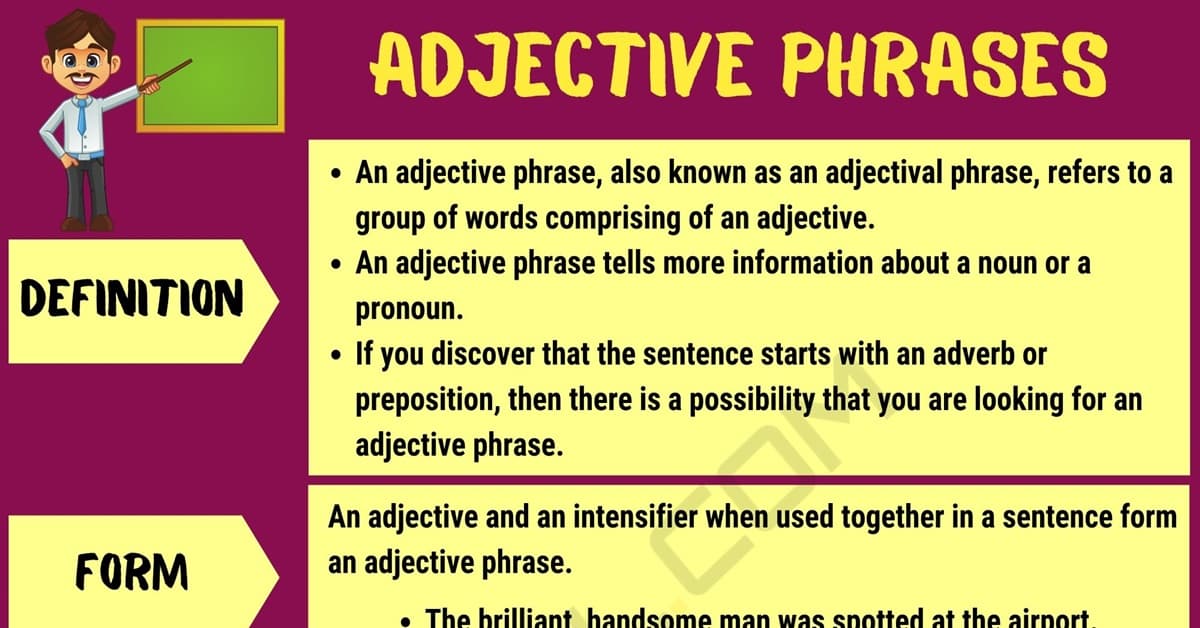What is an adjective phrase? Most people are well-informed about what an adjective is, but there may be a bit of confusion when it comes to defining an adjective phrase.
Adjective Phrase
What Is an Adjective Phrase?
An adjective phrase, also known as an adjectival phrase, refers to a group of words comprising of an adjective. An adjective phrase tells more information about a noun or a pronoun.
You don’t need to have perfect grammar to master how adjective phrase works. We often use these phrases from time to time, without even our consent.
How Do You Recognize an Adjective Phrase?
The secret to finding an adjective phrase within a sentence is to first look at the first word. If you discover that the sentence starts with an adverb or preposition, then there is a possibility that you are looking for an adjective phrase.
What Does an Adjective Phrase Comprise of?
An adjective and an intensifier when used together in a sentence form an adjective phrase. An example of this could be:
- The brilliant, handsome man was spotted at the airport.
There are times when one adjective cannot be used to describe something fully. In such a scenario, an array of adjectives can be used together to give more information about a noun. An example of this might be: She wore a red, black, and white watch during her brother’s wedding.
In the sentence, “David is a nice boy”, we have only one adjective, namely, nice. Nevertheless, in the sentence, “David is a nice, intelligent, handsome boy,” we have an adjectival phrase describing more information about David.
The Role Played by Adjective Phrases in a Sentence
Adjective phrases do not only modify nouns but also pronouns. Let’s look at the following examples:
- She is from California.
- Ann is from California.
Every sentence contains an adjectival phrase. In the first sentence, the adjective phrase “from California” describes more information about the pronoun and the subject “She”. In the second sentence, the adjectival phrase “from California” describes more information about the noun and subject “Ann.”
The working of the adjective phrase is the same, even if the noun is a pronoun or not. So, if you intend to mitigate a noun to be more descriptive, you should opt for an adjective phrase. You can use multiple adjectives within a sentence. You can mitigate a noun by either starting a phrase with a preposition or an adverb.
Examples of Adjectival Phrases
The most effective way to learn such a phrase is by going through examples. Let’s look at an example of a sentence composed of an adjective and the other one composed of an adjectival phrase:
- The beautiful girl is from London.
- The girl who is so beautiful is from London.
The two sentences have the same meaning. The first sentence comprises of an adjective, while the second one comprises of an adjectival phrase.
Choosing adjective phrases correctly can make sentences more lively and bring on personality. A single adjective may not be descriptive enough, thus the need for an adjective phrase.
When planning to include some adjectival phrases in your writing, you should first go through a list of adjective phrases for more detailed information.









0 Comments